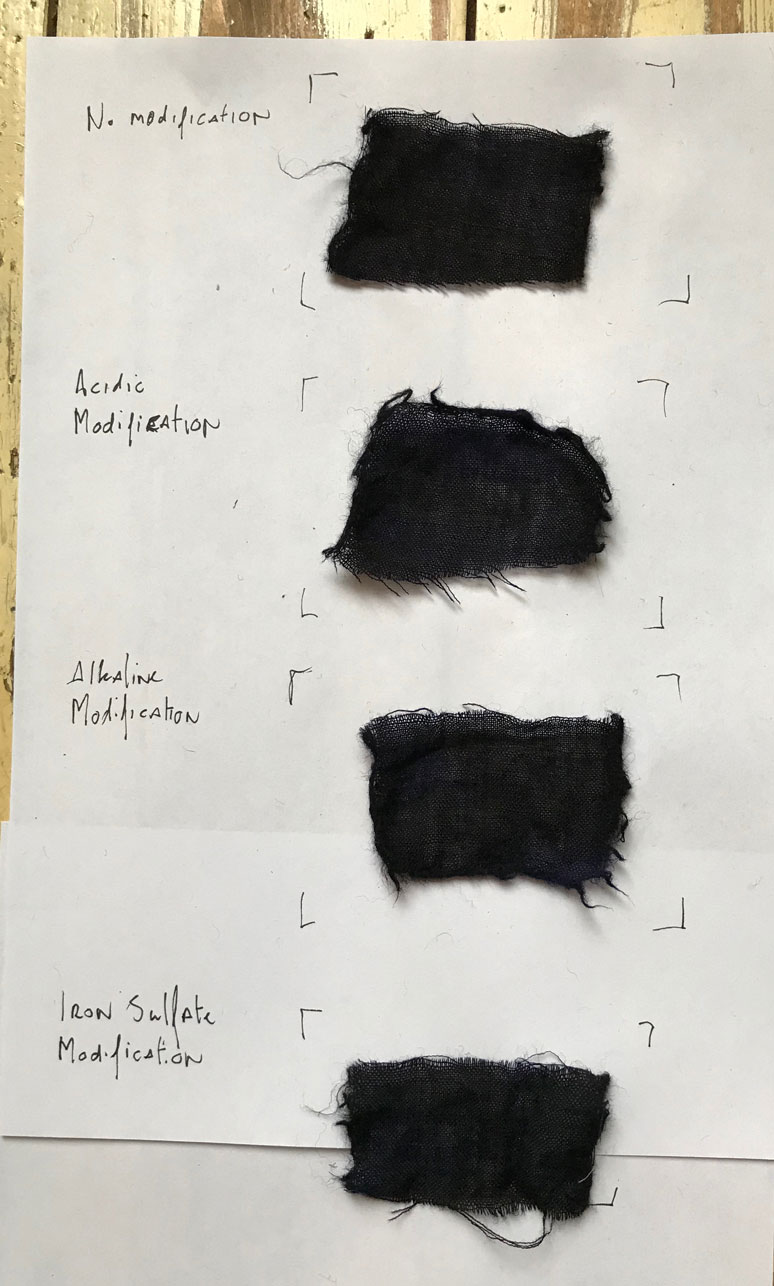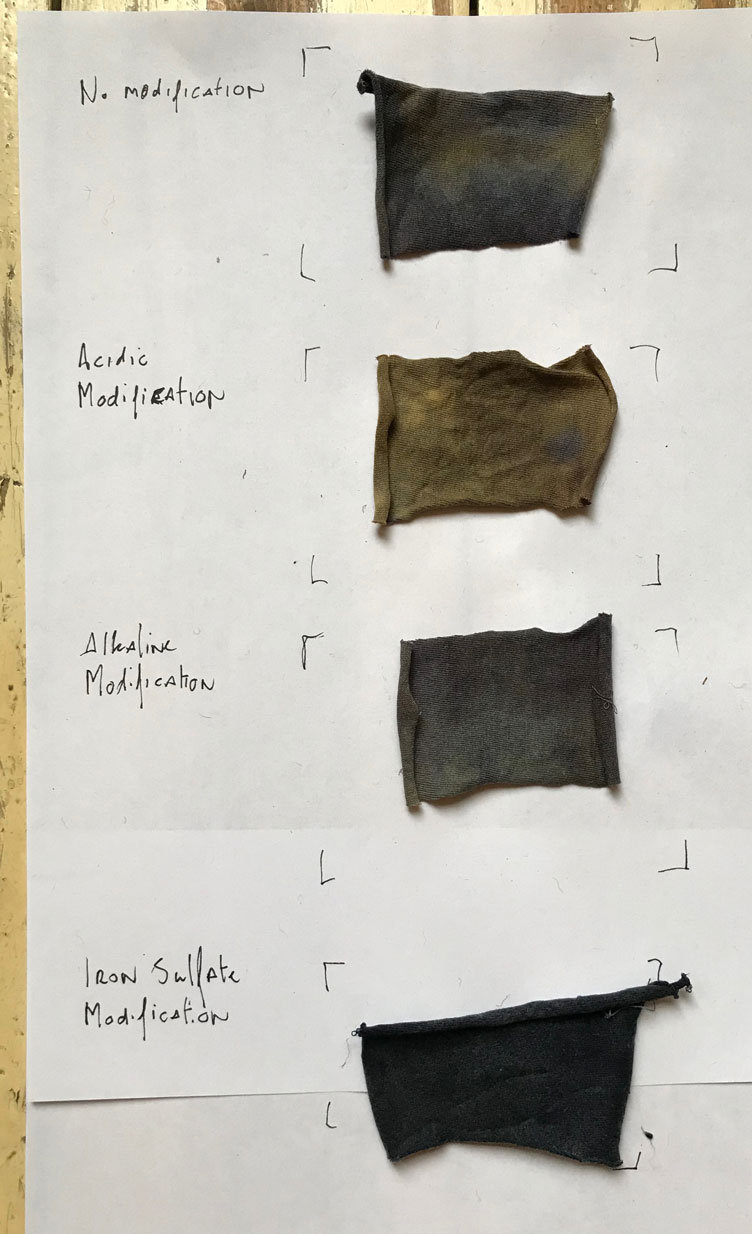Campeche dye¶
dyeing & modifying with campeche.¶
In this week's kit the campeche and different fabrics with varying scouring and mordanting (or no scouring or mordanting) were supplied in a kit. Also some chemicals were supplied to mordant some fabric.
Research¶
"Campeche also referred to bloodwood, bluewood and logwood, to name but a few. It's scientific name, Haematoxylum campechianum, translates from greek as bloodwood. The Campeche is a tree in the legume family native to southern mexico, central america and the caribbean.
Bluewood was a valueable comodity in 1600 to 1800. Often traded by pirates. Historically bluewood was frequently used to dye fabrics and as PH inidcator.
The woodchips are still used to make haematoxylin, used in histology to stain cells"
Useful links¶
Recipe¶
40 grams campeche or bluewood chips.
Alum
Nylon stockings
Vessel to use as a dyebath
Mordanted and un-mordanted textiles.
cellulose (scoured only, alum & alum/soy mortanded
- tencell
- linnen
animal based (washed or alum cream of tartar mortanded)
- wool
- silk
PH modifiers
- Iron sulfite
- Electrolised 3.5PH kangen water (or vinegar)
- Electrolised 11.5 PH Kangen water (or a soda solution)
-
Add the woodchips into a knotted piece of stocking, to create a teabag. Add the bluewood teabag to 2 liters of water. Heat until 80 Celcius. Leave for a day.
Add your textiles and reheat, but do not boil, the dyebath with the textiles. Leave for another day if your enthousiasm allows for it. Remove the textiles from your dye bath, and rinse out the excess dye.
Do not throw away the dyebath, we will use it later.
Gallery¶


















Last update: January 25, 2021